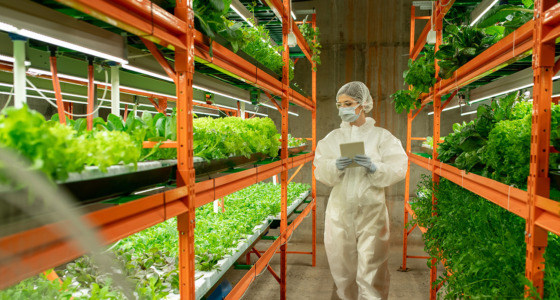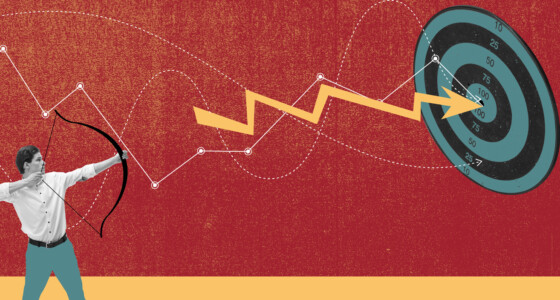

For many, sustainability is all about being eco-friendly. For example, you might hear that a leaking faucet with one drop per second wastes 165 gallons or 750 liters per month—as much water as an average person uses in two weeks. But if you fix all your faucets and even start recycling, that will barely cover a third of what sustainability actually means.
Let’s go deeper and explore sustainability in a broader sense.
History of the concept and principles of sustainable development
Sustainable development has its roots in sustainable forest management, first presented by John Evelyn. During the 17th and 18th centuries, England became aware of the depletion of timber resources in the country. And in a 1662 essay, Evelyn argued that every owner had to be responsible for the planting of trees and stopping the destructive over-exploitation of natural resources.
But it wasn’t until 1987 that the sustainable development definition was made official. In the report Our Common Future (the Brundtland Report), the United Nations World Commission on Environment and Development included the following:
“Sustainable development is development that meets the needs of the present without compromising the ability of future generations to meet their own needs.”
Three pillars of sustainable development
Examples of sustainable development goals fall into one of the following categories.
1. Environmental sustainability
Goal 13: Take urgent action to combat climate change and its impacts
The environmental pillar is founded on a commitment to environmental conservation, renewable energies, saving water, and sustainable mobility, construction, and architecture. The goals in this category aim to reduce risks and measure the environmental impact of human activities.
To follow the principles of environmental stability, people must stop contributing to:
- The systematic increase in extraction and processing of natural resources, especially those from the earth, such as fossil fuels (oil, gas, and coal), rocks, and minerals
- The systematic degradation of natural processes, such as deforestation, overfishing, and loss of wildlife habitat
- The systematic increase in creating toxic resources, such as plastics and chemicals
2. Social sustainability
Goal 4: Ensure inclusive and equitable quality education and promote lifelong learning opportunities for all
Social sustainability aims to create a society that doesn’t systematically undermine people’s capacity to meet their basic needs. The basic human needs, which transcend all times and cultures, are defined as:
- Subsistence (food, shelter, work)
- Affection (friendships, family)
- Protection (social security, health systems)
- Participation (responsibilities, duties, rights)
- Understanding (literature, policies, education)
- Identity (religion, language, customs, values, norms)
- Creation (abilities, skills)
- Leisure (games, parties, peace of mind)
- Freedom (equal rights)
Issues encompassed by social sustainability include community development, human rights, cultural diversity, health and wellbeing, workforce development, ethical trade, and more.
3. Economic sustainability
Goal 8: Promote sustained, inclusive, and sustainable economic growth, full and productive employment, and decent work for all
The previous two pillars can’t happen without rethinking the economy. Seemingly unrelated concepts like taxation and corporate financing are tied to environmental and social issues.
In other words, the economy has a huge impact on how effectively people can follow all sustainability principles. And it’s important for businesses to earn profits in a manner that respects and upholds the other two pillars.
Activities under the economic pillar include governmental and corporate compliance, risk management, fair accounting practices, and more. Some of the principles have already become an integral part of Corporate Social and Environmental Responsibility (CSER), but they are not the global standard yet.

Importance of sustainable development in business
Sustainability in business is good for the business itself. First of all, it also protects the brand and mitigates risks. Improper practices—like an oil spill or unsafe working conditions—can damage an organization’s reputation and hurt its financial bottom line.
Being purpose-driven also gives businesses a competitive advantage. It improves operational efficiency, attracts a motivated, skilled workforce, and helps meet growing consumer demands. Just keep in mind that if you only appear more environmentally friendly or socially conscious without taking action, it will likely create the opposite effect.
Challenges to improving sustainability in business
These are the biggest barriers that companies face, especially smaller businesses:
- Lack of resources: Many companies don’t have the time and money to implement sustainable strategies. But rather than focus on things they can’t do, companies can enforce small and make affordable changes.
- Lack of planning: Sustainable initiatives are often complex and overwhelming. If that’s the case for you, narrow down your efforts to one or two key issues that you can have the biggest impact on.
- Lack of long-term thinking: Short-term action offers quick wins. But sustainable businesses must balance short and long-term actions, even if they rarely guarantee immediate returns.
If sustainable development focuses on the future, do we lose out now?
Not necessarily. It’s true that following sustainable development principles is a huge adjustment. It can be inconvenient and costly, especially in the first stages.
However, it’s worth finding better ways of doing things and taking into account the satisfaction of the needs of the present generations. This includes not only the long-term benefits but also the short to medium term ones. For example, sustainable energy consumption saves money, and switching to walking or cycling improves health.
Overall, sustainable development is about taking small actions collectively, which will add up to real change.








